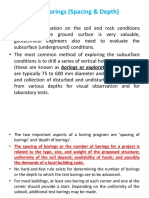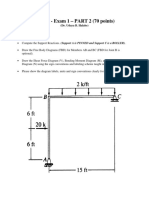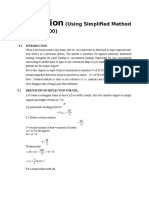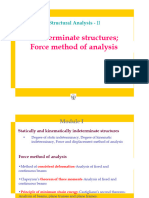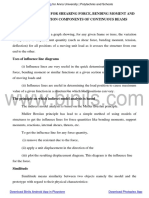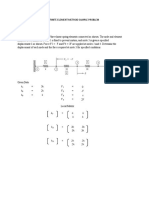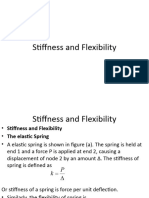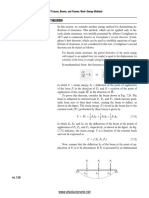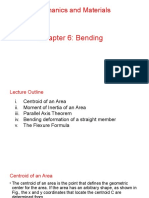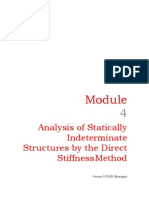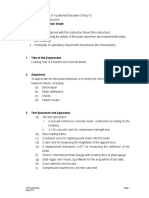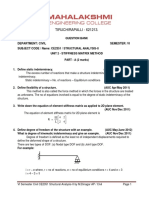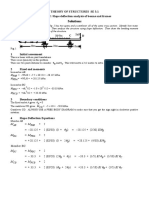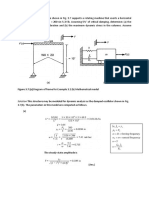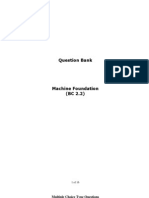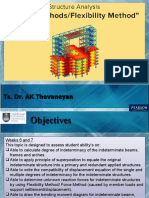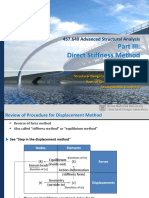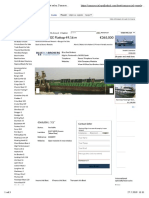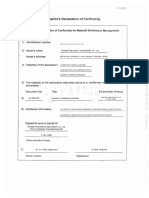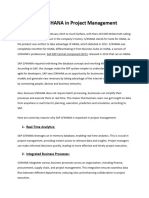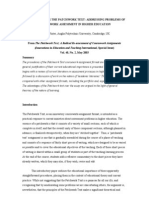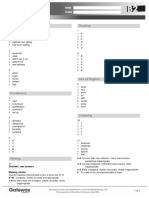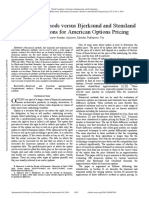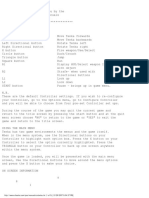0% found this document useful (0 votes)
812 views73 pagesLecture - Force Method
1. The force (flexibility) method expresses relationships between displacements and forces in a structure. It determines unknown redundant forces that eliminate displacement errors in the primary structure.
2. The procedure involves determining the degree of static indeterminacy, releasing that number of joints to create a determinate primary structure, calculating displacement errors in the primary structure, determining displacements in the primary structure due to unit redundant forces, and calculating redundant forces that eliminate the displacement errors.
3. With the redundant forces determined, all other member forces in the original structure can be found using superposition and static equilibrium. Displacements are then calculated using the member deformation expressions and virtual work principles.
Uploaded by
F FCopyright
© © All Rights Reserved
We take content rights seriously. If you suspect this is your content, claim it here.
Available Formats
Download as PDF, TXT or read online on Scribd
0% found this document useful (0 votes)
812 views73 pagesLecture - Force Method
1. The force (flexibility) method expresses relationships between displacements and forces in a structure. It determines unknown redundant forces that eliminate displacement errors in the primary structure.
2. The procedure involves determining the degree of static indeterminacy, releasing that number of joints to create a determinate primary structure, calculating displacement errors in the primary structure, determining displacements in the primary structure due to unit redundant forces, and calculating redundant forces that eliminate the displacement errors.
3. With the redundant forces determined, all other member forces in the original structure can be found using superposition and static equilibrium. Displacements are then calculated using the member deformation expressions and virtual work principles.
Uploaded by
F FCopyright
© © All Rights Reserved
We take content rights seriously. If you suspect this is your content, claim it here.
Available Formats
Download as PDF, TXT or read online on Scribd
/ 73







